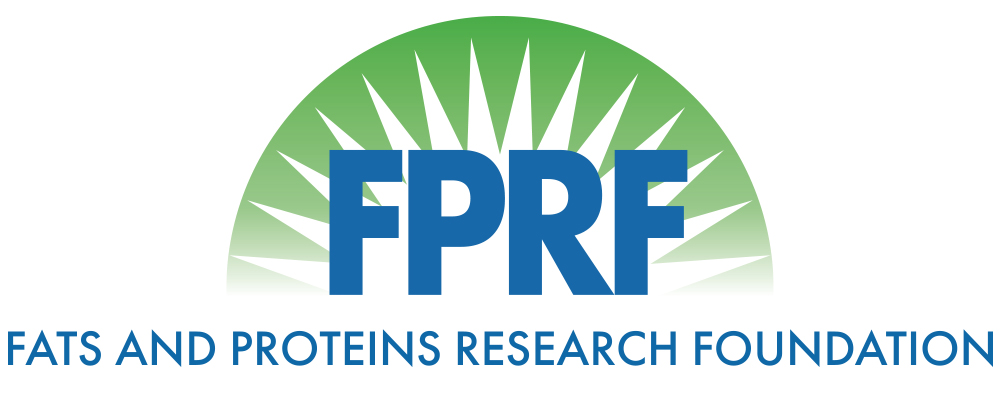Determination of Salmonella Thermal Destruction Times for Rendering of Chicken By-product
Title: Determination of Salmonella Thermal Destruction Times for Rendering of Chicken By-product
Principal Investigator: T. Matthew Taylor, Texas A&M University
Keywords: Taylor, 2014, food safety, microbiology, thermal validation, FSMA, Salmonella, Taylor
Year: 2014
Objective: The three core objectives of the current research project that experiments were:
1) identify the D-values of Salmonella enterica serovars previously linked to human
foodborne disease via poultry products to allow subsequent prediction of processing
times required for desired Salmonella lethality;
2) identify the process equivalency value (Z-value) allowing the determination of impact of
processing temperature alterations on subsequent Salmonella D-values, giving renderers the ability to predict impacts of process condition changes on subsequent Salmonella
inactivation, and;
3) provide renderers with data to assist in the validation of processes designed to inactivate
Salmonella from raw poultry carcass tissue/slurries, protecting against transmission of
pathogens to pet food manufacturing facilities.
Lay Summary/Industry Summary: The current project aimed to validate thermal/heat processing systems for poultry
byproduct/offal slurry to inactivate Salmonella enterica, providing D-values and a Z-value for
processes useful for poultry offal rendering. D-values for multiple serotypes of Salmonella,
including S. Enteritidis, S. Senftenberg, and S. Gallinarum, were determined. D-value
experiments completed in aqueous buffer indicated S. Senftenberg was statistically more heat
resistant than all other experimental salmonellae, with a D140°F of 3.48 min, nearly four-fold higher than the next most heat-resistant Salmonella serovar (S. Enteritidis; D60°C = 0.89 min). During experimentation it was determined that S. Gallinarum was the least heat-resistant serovar tested, indicating that proper rendering would successfully inactivate the pathogen. Following the completion of in vitro D140°F-value calculation, an experiment was designed to determine the D-values of mixed Salmonella cocktails to heat at 160, 170, and 180°F in poultry byproduct
slurries to determine the lethality achieved during product come-up to the targeted processing
temperature. This experiment yielded no surviving Salmonella at any of the process
temperatures, removing the ability of researchers to determine come-up period D-values of
Salmonella. A minimum of a 6.5 log10-cycle reduction was achieved during these experiments,
where Salmonella survivors were reduced to below the limit of detection for the assay.
Following this initial round of experiments, a series of trials in poultry byproduct slurries were
designed and carried out to determine the D-values of Salmonella in revised processing
temperatures (150, 155, 160°F). Researchers modified the experimental protocol in consultation
with sponsor officers to first raise the temperature of the poultry byproduct meal sample to the
target process temperature, inoculate the Salmonella cocktail into the sample and homogenize,
and then test for Salmonella survival. These revisions to the experimental protocol allowed for the recovery of surviving salmonellae at all experimental temperatures, though at 160°F a
minimum 5.0 log10-cycle lethality was achieved over three identically completed replications in
only 15 sec (0.25 min). Mean D-values for Salmonella cocktails at 150, 155, and 160°F were
0.254 + 0.045, 0.172 + 0.012, and 0.086 + 0.004 min, respectively, and each statistically differed
from the other two D-values (p<0.05). The mean process Z-value was 21.948 + 3.87°F. These
data are useful for the rendering industry to develop thermal process schedules capable of
achieving at least a 5.0 log10-cycle inactivation of Salmonella assuming no lethality during
process come-up periods (time to achieve targeted process temperature). Ultimately, these data
further validate the capacity of current rendering processes to achieve a 7.0 log10-cycle
cumulative inactivation in Salmonella from the treatment of poultry offal slurry at temperatures not less than 150°F for use in development and validation of food safety preventive controls. Data presented here cannot be applied to rendering of products with substantially differing
formulation (beef versus poultry), and require close adherence to thermal processing schedules
discussed.
Scientific Abstract: The Food Safety Modernization Act and its derived rules are anticipated to stipulate the development and implementation of food safety preventive controls for animal and livestock foods/feeds; such products are commonly formulated to include rendered animal tissue. Recalls and outbreaks of human disease following cross-contamination of pet foods with enteric
pathogens such as Salmonella enterica, and subsequent exposure of consumers to these
contaminated products, has resulted in increased concern regarding the microbiological safety of
animal foods. The objective of this project was to determine the inactivation of Salmonella
enterica in poultry byproduct, considered a “worst-case”-type product. Poultry meal was
obtained from a commercial processor, inoculated with a Salmonella enterica cocktail and
subjected to heating at 150, 155, and 160°F for up to 15 min, after which surviving salmonellae were determined by enumeration on plating media. Mean D-values for the Salmonella cocktail at 150, 155, and 160°F were 0.254 + 0.045, 0.172 + 0.012, and 0.086 + 0.004 min, respectively, indicative of increasing susceptibility to increasing heat application during poultry byproduct processing. The mean process Z-value was 21.948 + 3.87°F. Experimental results indicate a minimum 7.0 log10-cycle inactivation of Salmonella may be obtained for the cumulative lethality
encountered during the come-up period and subsequent rendering of poultry meal at temperatures not less than 150°F. Therefore, current poultry rendering procedures are anticipated to be effective for achieving necessary pathogen control when completed under sanitary conditions.
